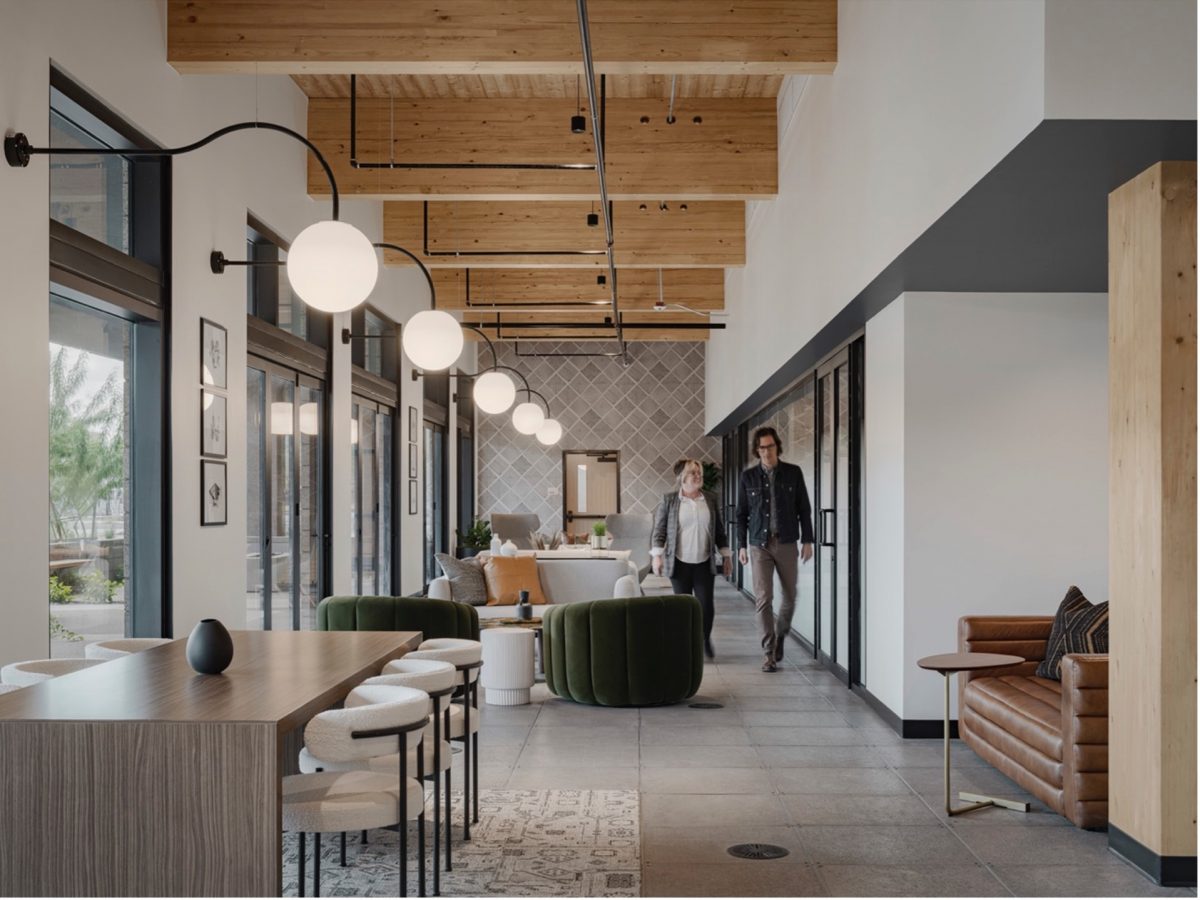RSP designer Katie Engelby RID, LEED AP explains the hospitality, residential and retail influences that are changing the workplace and what it means for the future of the office.
For decades, the modern workplace has been so much more than just a place to complete tasks. And increasingly, the office has to meet a number of new needs to help employees continue to do their best work. Not least of which is the need to encourage knowledge workers to come back to the office, even if it’s only 2-3 days a week.
As designers, we are looking to the hospitality, residential and retail industries—no strangers to change themselves—and integrating those trends into our workplace concepts to adapt to the times, help employees do their best work, and help employers attract and retain top talent. And according to the Society for Human Resource Management, maintaining employee morale and engagement was the number one priority last year, suggesting we may be approaching a tipping point. Many aspects of the workplace have to evolve, including the physical environment, if businesses expect to remain competitive.
The Retail Model at Work
Whether it’s a customer or an employee, retail stores and the workplace are becoming singularly focused on the user, their experience and their journey through the space.
To make it successful, we need to understand and design to that user’s “why”—why visit a brick-and-mortar store over shopping online and why commute to the office rather than work from home. Most knowledge employees continue to have some flexibility in their work week, so it’s crucial to find ways to attract them to the office. In retail, creating multi-use spaces and deep, enriched experiences have been key to the success of many brands. Customers want to feel like they are part of something bigger and connect on a higher level. The same is true in the workplace.
Retail’s focus on hyper-personalization and loyalty to a brand are becoming attractive components of the workplace as well. And a retail-based demand for digital experience is helping to create connectivity and an ever-evolving experience for employees. Understanding how retailers find ways to encourage an in-store experience is critical to a retailer’s success. Similarly, a corporation’s success is built on having employees engaging with and utilizing their leased space.
In the workplace, this translates to top-class digital connections, a variety of collaborative spaces, and a seamless experience as soon as employees walk through the door. We’re also seeing many corporate clients infusing their spaces with history- or mission-focused components, including exhibits, dimensional graphics and other legacy reminders that give a workplace an added resonance.
Hospitality Meets Home in the Office
Employers hoping, expecting or demanding that knowledge workers come back to the office are asking us how to make their workplaces more enticing. Making the office super comfortable and integrating touches of residential and hospitality can make a huge difference.
The entrance is the first step, replacing the intimidating and formal corporate reception desk with a vibrant concierge station that replicates the welcoming and exciting experience of walking into a hotel lobby. We integrate activity spaces that include food and beverage stations, a variety of furniture layouts, strategically placed lighting and easy access to power and digital connectivity.
Nods to residential design continue to show up in the workplace, particularly in quieter settings ideal for heads-down focus work. Casual lounge settings offer employees the opportunity to reset throughout the day and residential-inspired lighting can create a more intimate ambiance and define specialty areas.

Creative Solutions in the Real World
Of course, it isn’t just a matter of making the office look like a home, hotel or store—we have to be intentional with how we implement it so the workplace can remain a place of productivity, creativity and collaboration. As designers, we have to be especially thoughtful about how our clients do that. Just as every retail and hospitality brand is different, every company works a little differently and connects with their employees differently. The most challenging part of the design process is ensuring the opportunity for the workplace to evolve as the user and the business evolve.
At the Miami Association of Realtors, which is set to be completed early next year, we integrated a number of retail, hospitality and residential components into the design concept. As a new global headquarters for the largest local realtor’s association in the U.S., it is a place for over 60,000 members and professionals to meet, learn, connect, celebrate and grow. People arrive directly into the center of the 140,000-SF headquarters in a welcoming two-story Club Lounge. The hospitality-driven design includes a concierge, a variety of seating, coffee bars, enclosed focus spaces and a monumental stair that provides not only a physical connection for both floors, but also an “Instagrammable” moment with a breathtaking backdrop and views of the city of Miami.

On the member floor, individual user experience takes center stage. We added digital screens throughout the floor to scan QR codes for wayfinding, attendance, and online access to resources before or after their training, adding that retail touch that is only going to grow with the future of the workplace.
Blurring the Focus Between Project Types
Clearly, the lines between retail, hospitality, residential and workplace are blurring. It’s an exciting time for the workplace as we push other designers and clients to consider the human experience from multiple perspectives with the goal of promoting human connection and comfort.
At the same time, the tenets of excellent workplace design still hold true—integrating and implementing ever-changing technology needs, ergonomic support and promoting well-being and health will never go away. The magic happens when we can find the balance in taking the best ideas from across all industries to give employees and companies workplaces that offer flexibility, productivity, and an experience they can’t get anywhere else.


